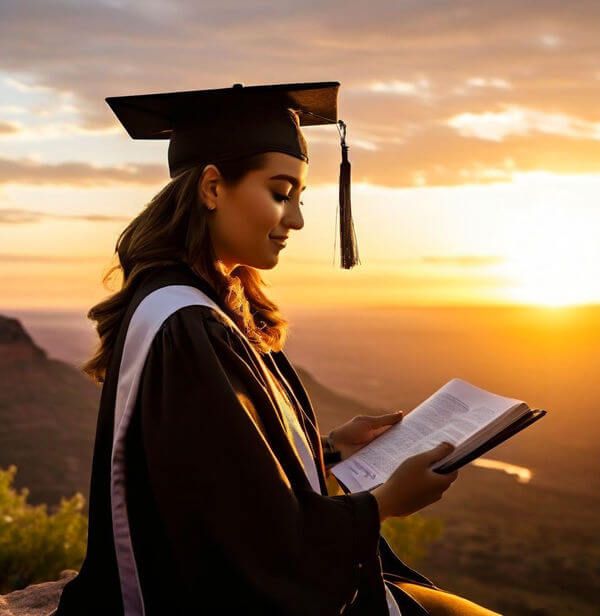
Overview of the F-1 Student Visa
The F-1 visa is designed for international students who wish to reside in the United States temporarily to pursue academic studies at a university, college, seminary, or conservatory. This visa ensures that students can stay in the U.S. for the duration of their academic program.
It is a non-immigrant visa that requires applicants to maintain a full course of study and adhere to the guidelines set by their host institutions. Obtaining this visa is the first step towards embarking on educational opportunities in the U.S., opening doors to diverse academic and cultural experiences.
Assessing the Suitability of the F-1 Visa for Your Studies in the U.S.
Pursuing studies in the United States represents a significant achievement, often the result of years of preparation and effort. If you are not a U.S. citizen or permanent resident, you will need to secure a visa for educational purposes. The F-1 visa is a popular choice for many international students due to its broad applicability, though it is governed by specific regulations.
Key requirements of the F-1 visa include the intention to study temporarily in the U.S. at an accredited academic institution. This visa is not suitable for vocational training programs, which instead require an M-1 visa. To qualify for an F-1 visa, your chosen institution must be recognized and authorized by the Department of Homeland Security under the Student Exchange and Visitor Program (SEVP).
While the F-1 visa permits limited employment opportunities, these are tightly regulated in terms of location and job type due to the non-immigrant nature of the visa. Moreover, if you plan to bring your family, your spouse and children can accompany you on F-2 visas. While they cannot engage in employment, your children are eligible to attend local schools. Their visa status will directly depend on the status of your F-1 visa.
Criteria for Qualifying for an F-1 Student Visa
To be eligible for an F-1 visa, applicants must meet several criteria established by U.S. immigration authorities. First, you must apply to and be accepted by a school approved by the Student and Exchange Visitor Program (SEVP). These institutions include not only universities but also high schools, private elementary schools, seminaries, conservatories, and language training programs.
Further requirements include:
- Enrollment as a full-time student at the approved institution.
- Proficiency in English, or enrollment in a program to achieve English proficiency.
- Demonstrable financial resources sufficient to cover your educational and living expenses while in the United States.
- Strong ties to your home country, evidenced by an intent to return home after completing your studies, which underscores the temporary nature of the F-1 visa.
- Residence outside the United States at the time of your visa application.
Navigating the F-1 Visa Application Process
You've reached a significant milestone by being accepted into a U.S. academic institution—congratulations on this achievement resulting from your dedication and hard work! Here’s what you need to know to secure your F-1 student visa.
Upon acceptance, your SEVP-approved school will enroll you in the Student and Exchange Visitor Information System (SEVIS). This system is used by SEVP to monitor and manage educational institutions and participants of exchange visitor programs, including F, M, and J nonimmigrant visa categories, within the U.S. education system.
Your next step is to pay the I-901 SEVIS fee, which is typically $350. This fee supports the operations of the SEVP program. After payment, your school will issue you a Form I-20, a crucial document confirming your school acceptance and eligibility for the F-1 visa.
With your Form I-20 in hand, you can apply for the F-1 visa at a U.S. embassy or consulate. It’s important to check the specific requirements of the U.S. embassy or consulate where you will be applying, as procedures can vary. You will also need to complete and submit the Form DS-160, a detailed application similar to the DS-260 used for immigrant visas. Ensure you allocate ample time to fill out this form thoroughly.
After completing the Form DS-160, you'll need to arrange an interview at a U.S. embassy or consulate, unless you are exempt due to age (under 13 years or over 80 years). The U.S. Department of State recommends scheduling your visa interview at the U.S. embassy or consulate in the country where you reside. Although you can choose to schedule your interview at a different location, obtaining a visa may be more challenging outside of your home country.
Before your interview, you must pay a $185 application fee. Additionally, depending on your nationality, you might be required to pay a visa issuance fee, which is payable only if your visa application is approved following your interview. Be mindful of varying visa appointment wait times, which can differ based on the location and time of year. You can check the estimated wait time for an appointment at specific U.S. embassies or consulates using the online appointment wait time tool.
It's important to note that F-1 visas for new students can now be issued up to 365 days prior to your course start date. This extension from the previous 120-day policy was implemented in February 2023 by the State Department.
Preparing for Your F-1 Visa Interview
If you are applying for an F-1 visa, attending an interview in the U.S. Embassy or consulate is a standard requirement. However, note that for current F-1 visa holders, visas can be issued at any time as long as the student is enrolled at a SEVP-approved institution and is active in SEVIS.
For your interview, you must bring the following items:
- A passport that remains valid for at least six months beyond your intended date of entry into the United States.
- The Form DS-160 confirmation page.
- Receipt for your application fee payment.
- A recent photo that shows the U.S. State Department's specifications.
- The Form I-20, issued by your academic institution.
Additionally, you should be prepared to present documentation that supports your application, such as:
- Transcripts, diplomas, degrees, or certificates from schools you have attended.
- Scores from standardized tests required by your U.S. school.
- Evidence of ties to your home country and proof of financial means sufficient to support your stay and educational expenses in the United States.
During the interview, a consular officer will ask you various questions to ascertain your eligibility for the F-1 visa. It is crucial to answer these questions fully and accurately, as you will be taking an oath. Ensuring that your responses are thorough and truthful will help facilitate a smooth visa approval process.
During your visa interview, the consular officer may take your fingerprints; however, this procedure can vary based on the location of the consulate or embassy. After the interview, the officer might inform you that your application needs additional administrative processing. If this is necessary, they will provide you with all the relevant details.
Once the interview and any necessary processing are complete, you will be notified about the decision on your application. If approved, you will receive your visa, allowing you to pursue your studies in the United States.

